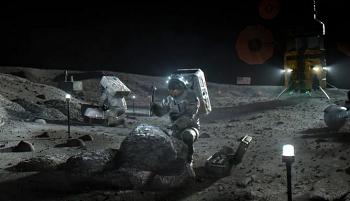Growing deep space food is a new frontier, and Canadians will test its limits
For many, the term astronaut food conjures images of dehydrated apple sauce and freeze-dried ice cream hauled with them into space from Earth.
But in the relatively near future, nutritious produce grown in deep space could be on the menu for astronauts.
In anticipation of future missions to the moon, to Mars and beyond, space agencies such as NASA and the Canadian Space Agency, as well as the Privy Council Office's Impact Canada Initiative, have launched the Deep Space Food Challenge. It's a call for researchers, scientists and other innovators to develop food production systems that will allow astronauts to grow their own food on long-term, deep space missions.
The challenge comes as space agencies focus their efforts on human exploration of the moon. One of the major difficulties in supplying astronauts with fresh food is that missions don't have an unlimited power supply for growing produce, and they can't create a lot of waste, said Matt Bamsey, Senior Project Manager at the Canadian Space Agency.
"Yes, we can bring a lot of prepackaged food with us, but there's a concern about whether that nutritional value is going to hold for that period of time," he said.
For missions that could stretch on for years, having reliable food production systems that provide astronauts with safe and highly nutritious food is key — as is reducing the need to resupply food from Earth.
"Imagine a crew of six astronauts and a mission of three years," said Bamsey. "That's a lot of food that you need to bring. And so if we're able to have food production technologies that astronauts can produce food in situ, that'll help us have to launch less into space."
Here in Canada, the challenge's brainstorming phase launched Jan. 12, 2021. Academic institutions, businesses and individuals can apply to the challenge with an idea.The second phase — a kitchen demonstration that requires qualifying teams to build a prototype and produce food samples — will happen in the fall for teams that make it to this next level.
Countering the risk of radiation in deep space
Mark Lefsrud and his team of about 50 students — collectively calling themselves the Martlet group, or the McGill Advanced bio-Regenerative Toolkit for Long Excursion Trips — are competing.
Lefsrud, an associate professor in the bioresource engineering department at McGill University, helped develop the Advanced Plant Habitat on the International Space Station, in which astronauts have grown crops such as dwarf wheat.
One of the major considerations for astronauts taking on deep space missions is radiation exposure, which can cause cell and tissue damage and increase astronauts' risk of cancer, neurogenerative diseases and premature aging.
The radiation risk increases beyond Low Earth Orbit, the orbit for the International Space Station, where the zone limit caps at around 1,000 kilometres above the Earth's surface.





